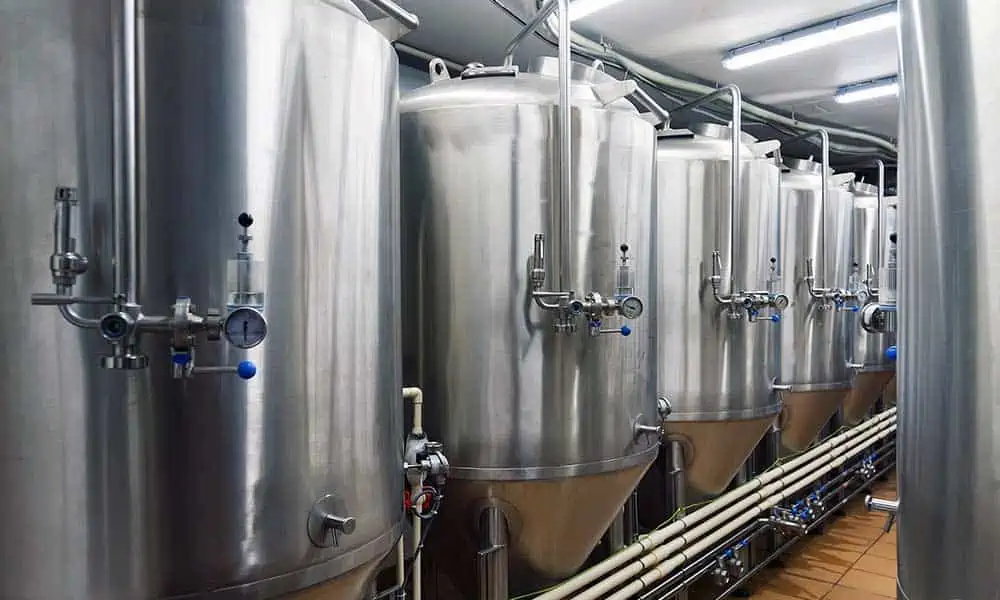Assessing a beer—whether as a finished product or at various points in the brewing process—is largely a matter of measuring visual and flavor-based cues. Does it taste right? What color is it? Is it clear? If it’s hazy, is the level of haze such that it signifies a production problem?
Haze is of key concern in beer brewing, as many mass-produced beers are known for their clarity and brightness.
The presence of haze is typical in many traditional beers, such as Hefeweizens and other wheat beers. In addition, hazy IPAs have become increasingly trendy in recent years.
But many brewers and macro-brewers produce bright, filtered beers that are sold in very large volumes throughout vast distribution areas. For these products, ensuring consistency and product recognizability is crucial to maximizing the visual impact of the product, as well as consumer satisfaction.

One of the most common forms of haze is “chill haze.” This results from proteins and polyphenols (micronutrients found in vegetables, fruits, and cereals) bonding together to form large particles which reflect light and are thus visible. Chill haze gets its name from the fact that these particles dissolve when the temperature of the beer rises above 68 degrees Fahrenheit (20 C).
As long as the particulates are soluble at warmer temperatures, chill haze does not pose a problem. However, if chill haze is left unremedied for long enough, or the particulates oxidize, they will form larger particles which are no longer soluble. The result is a beer which is permanently hazy.
More seriously, haze can be an early sign of an infected beer, compromising the taste of the product.
Visual aesthetics are not the only concern when it comes to haze. Haze can be a sign of a beer batch infected with Brettanomyces (wild yeast), Lactobacillus, Acetobacter aceti, or other unwanted organisms. While most forms of infection don’t pose a health concern, infection can still result in a product with significant off-taste.
For brewers that produce beer in extremely large quantities—or smaller brewers that wish to scale up their production—relying on visual inspection to evaluate beer haze is not feasible. This is especially true when brewing occurs in multiple locations, where the subjectivity of multiple brewmasters inevitably results in inconsistent product.
Turbidimeters offer an objective, automated means of measuring beer haze and ensuring consistency across multiple batches, or in beer produced in multiple locations.
While “haze” is the term most often used to describe the foggy quality of a beer, more generally the opacity of a fluid is defined in terms of “turbidity.”
Turbidity is the measure of the quantity of particles suspended in a fluid. As the number of particles in a fluid increase, they begin to scatter light passing through. This is interpreted by the eye as cloudiness or haziness.
In many day-to-day situations, we unconsciously evaluate the turbidity of fluids we interact with. The water that comes out of your tap typically has very low turbidity—it’s clear—and you don’t think twice about drinking it. But if you were to one day run the tap and found that you had a glassful of cloudy water, you likely be instinctively repulsed by it.
This is because we associate clarity (low turbidity) with purity, and a lack of clarity (high turbidity) with contamination. While turbid water may simply have high mineral content, turbidity can also be a sign of something more sinister, such as bacterial growth.
Haze and turbidity are most often controlled or removed from fluids—including beer—via filtration.
Old school homebrewers may crack an egg in their beer—the egg white is placed in the brew, and as it sinks the albumin acts as a mobile filter—or use some other another fining additive to remove haze from their beer. At a large scale, macro brewers pump beer through large filtration setups to get that desirable polished clarity before going on to storage and/or packaging for sale.
Large scale filtration often uses plate and frame equipment with a filter media. Diatomaceous earth is a classic type of filter media—often encountered in swimming pool equipment—although there are other materials, such as perlite. In more recent times, filtration cartridges have become more popular.
Plate and frame filters consist of vertical plates covered with a filter cloth. In between these plates are frames that alternately are hollow or contain filter media. Beer is pumped into the frames filled with filter media, where the solids that cause haze are trapped. Clear beer flows through the media and cloths into the hollow plates, and out through collection tubes.
But what happens if a cloth fails and allows unfiltered beer to flow through into the clear stream? This can be a costly problem, as the beer may be spoiled or require reprocessing to bring it to specification. Sight glasses on the clear outflowing liquid have traditionally been used to spot when the beer is no longer clear, but these require the constant attention of an operator to ensure all is going well. Furthermore, using a sight glass is a subjective measure. It’s easy to see when a gross failure in the filter has happened. But smaller problems can be easily missed until late in the process.
Turbidimeters offer an objective, quantifiable means of measuring turbidity in beer and other fluids.
Enter turbidimeters. A turbidimeter is essentially an electronic eyeball that stares continuously at the flowing stream and reports the amount of particulate it sees. The output from the turbidimeter is fed into the overall control system in operation and can trigger a warning or alarm when the particulate level surpasses a predetermined setpoint, alerting the operator to attend to the problem. Sophisticated systems will also stop the flow of beer or divert the flow back to its holding tank while the issue is taken care of.
Some care has to be taken when applying turbidimeters to a beer haze application. A turbidimeter must have enough sensitivity to see low levels or particulate in the beer while being stable in operation, resilient to optical fouling, and insensitive to color change. The ideal instrument is a 90° scatter device, for sensitivity, with an NIR light source for color independence, and a scatter to attenuation ratio measurement technique for window fouling tolerance. This approach will deliver readings that correlate well with offline methods. Forward scatter and backscatter instruments can also be used to measure beer haze, but will deliver results that differ from those of standard offline instruments.

